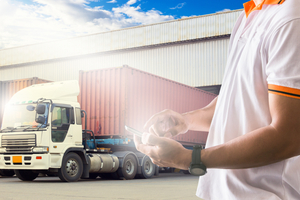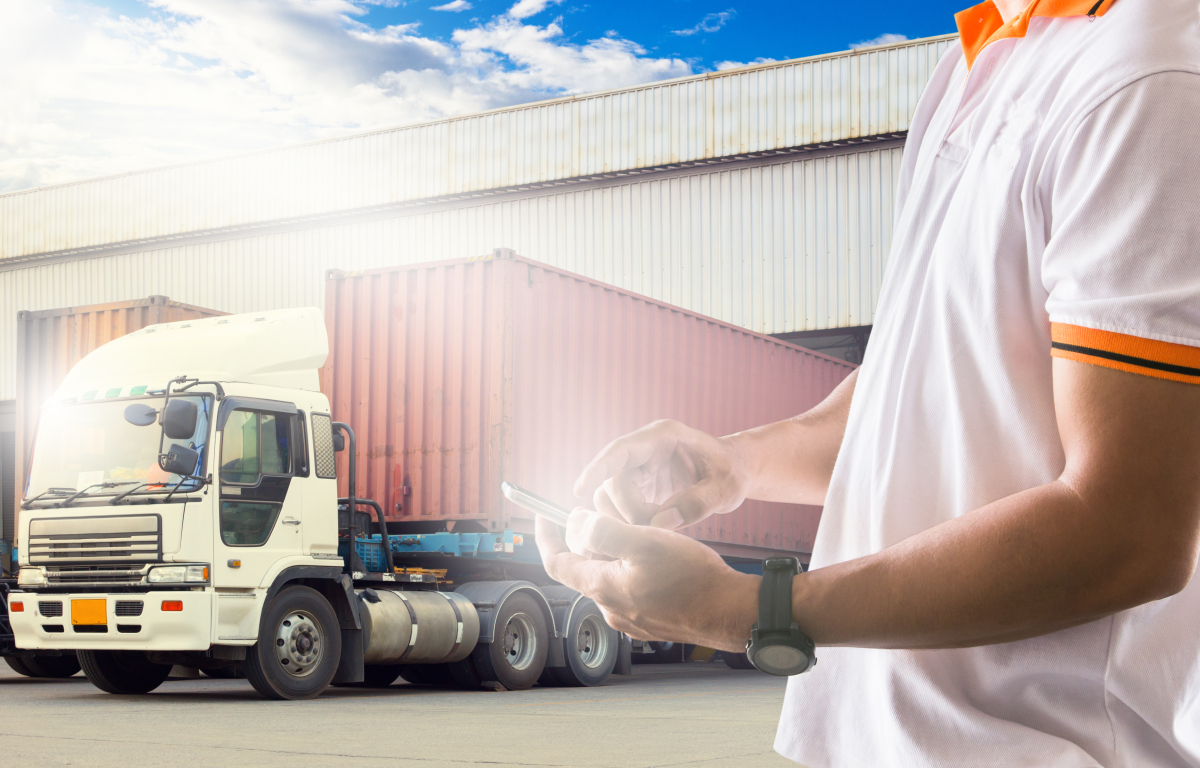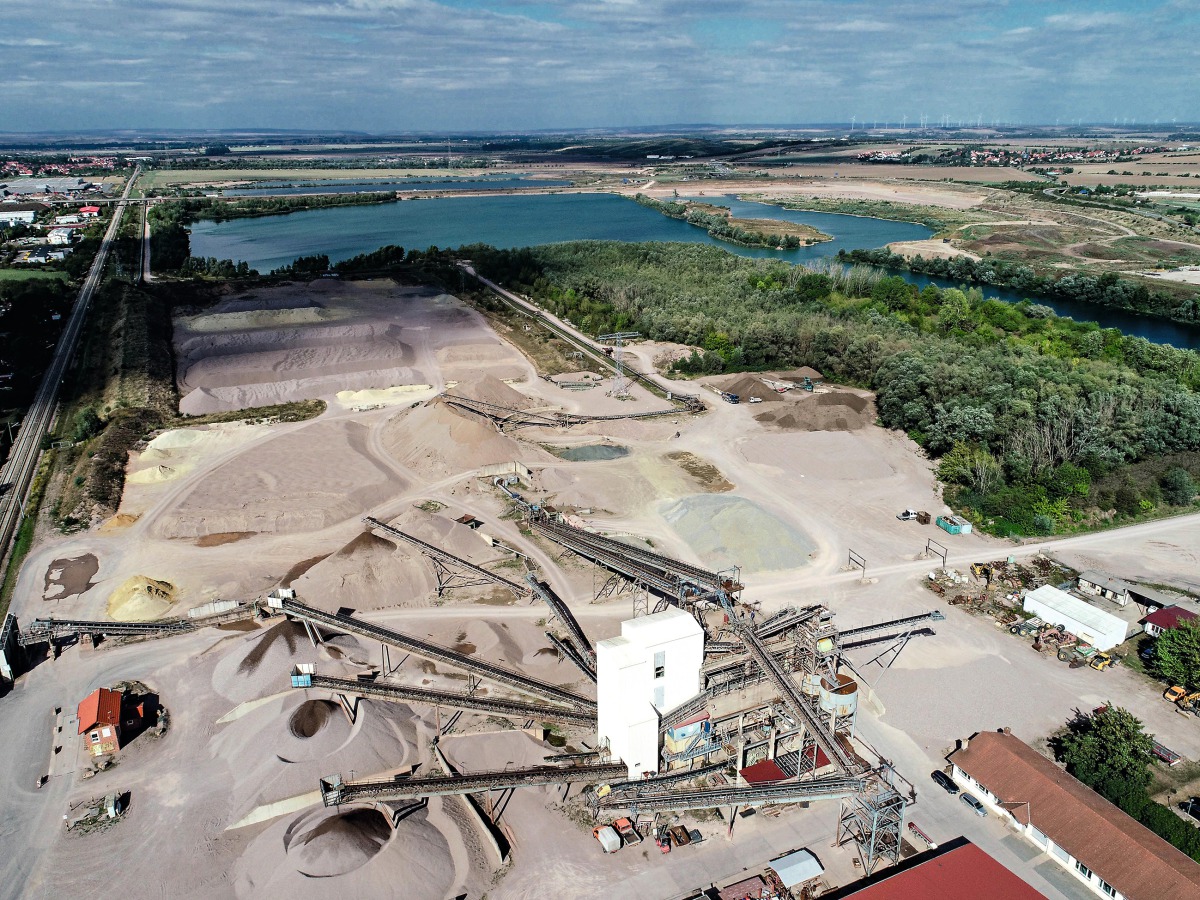Combining efficiency and sustainability: Digital solutions for bulk goods logistics
The building materials industry faces the challenge of significantly improving not only its efficiency, but also the sustainability of its processes. Life cycle assessment and CO2 emissions play a central role here, as customers are increasingly demanding transparent and comprehensible information on this topic. For this reason, companies large and small are placing greater emphasis on sustainable processes in production and logistics. Sustainable digitalization has initially found its way into highly processed products such as cement, readymix or lime, but is of course also relevant for other areas such as sand and gravel, where it is gaining in importance as well.
Although at first glance it seems sensible to focus on sustainability in the production of building materials, the enormous potential of automation and digitalization in logistics is often overlooked. These technologies can not only increase the efficiency of the entire process chain, but also significantly reduce CO2 emissions.
The challenge is to develop an effective and sustainable digitalization strategy for bulk goods logistics that involves all relevant players - customers, suppliers, hauliers and recipients. Important aspects include identifying the main use cases and considering project-specific factors that are crucial for successful implementation.
Optimization of the entire supply chain
Current logistics processes such as ordering, order and transport planning and delivery are often organized decentrally and assigned to the respective production sites. Comprehensive planning and optimization that goes beyond the individual plants does not usually take place. In addition, there are often breaks along the process chain between different, non-integrated partial solutions, which means that there is no online data or information exchange between these systems.
The current challenges in the logistics workflow:
Orders are often placed by email or telephone and not online.
The distribution of orders to the production sites is not optimal, as there is a lack of transparency regarding better alternatives.
No flexible distribution of pending deliveries between the various plants, which means that long waiting times or a lack of stocks for certain materials cannot be managed effectively.
Non-optimized transports result in longer journeys (in terms of time and distance) and higher fuel consumption.
With asphalt and readymix, there is also a risk of deliveries arriving late, making the material unusable or the quality on site not meeting requirements.
Options for optimization:
Online order entry:
By using an online customer portal (e.g. Axians VAS Cloud Logistics) to create orders, errors can be reduced and email traffic minimized. With 10000 orders per month, saving an average of three emails per order alone can save over 100 kg/a of CO2.
Optimized planning and distribution:
Improved allocation of orders to the most suitable plants, combined with a transport optimization system, reduces waiting times and transport routes. Drivers can thus react to changes at short notice and optimize their routes. These measures reduce fuel consumption and significantly improve the CO2 balance.
Minimizing errors and delays:
Optimized planning and real-time data can significantly reduce incorrect or late deliveries. This leads to more efficient and sustainable customer service.
Reduction of manual activities and delays
An inefficient logistics process is often characterized by manual, error-prone processes, media disruptions and delays. Especially in plant logistics, there is great potential to increase efficiency and automation through the use of advanced logistics software like Axians VAS Yard Management and thus also to promote the sustainability of processes.
Currently, truck drivers often arrive at the loading plant unannounced, are not always informed about the details of their load and have no set loading time. This leads to a manual and time-consuming registration process at the plant. In such cases, delays and backlogs are the rule rather than the exception.
By optimizing the individual process steps and providing immediate, digital access to the required data, manual activities and waiting times can be significantly reduced during operation.
Typical examples:
Central coordination of delivery dates:
Central control and advance information about deliveries and the provision of all relevant data to the driver can make the delivery process more efficient and smoother. The information required for loading and unloading is already known before the truck arrives at the plant and is available in the central, cloud-based logistics system. This data is accessible to the driver via a mobile app on their smartphone and in the plant’s logistics system. This avoids time-consuming searches for delivery information and reduces unnecessary waiting times for the truck.
Automated check-in and check-out processes for trucks:
With the introduction of self-service terminals connected online to a plant logistics system such as Axians VAS Yard Management, the check-in process at the plant entrance can be completed in a matter of seconds. The truck is identified quickly and efficiently - whether by cameras or other registration technologies such as QR codes, TAN entries or RF/ID cards. The driver immediately receives information about the assigned loading point at the terminal. Automation can also significantly speed up the loading and checkout process when leaving the plant. As a result, the truck spends less time at the plant and consumes less fuel, which reduces the ecological footprint.
Use of mobile loading terminals:
One example of this is the use of mobile terminals on wheel loaders or forklift trucks, which immediately display the correct delivery and loading data interactively to the operator. This prevents communication errors, many avoidable paper printouts and the manual filling out of loading slips and also saves time for subsequent corrections.
These examples impressively demonstrate the range of solutions that can contribute to increasing sustainability in bulk goods logistics. Successful decarbonization begins with a comprehensive optimization of processes - also in logistics.
Digital and paperless logistics workflow
Paper-based processes are still widespread in bulk goods logistics, which often leads to media disruptions. For example, order lists and delivery schedules are often printed out. Pre-delivery bills and loading instructions are also created and printed several times after loading at the plant exit. After the manual signature of the recipient, the paper-based delivery bills are copied. In addition, the truck driver manually creates and copies his trip reports.
These practices lead to a poor CO2 balance of the delivery processes. A four-page printout per delivery causes around 2.5 t/a of CO2 for 120000 deliveries. The potential for greater sustainability through digital, paperless processes is considerable. A paperless workflow in bulk goods logistics begins with online ordering, where customers or planners create their orders directly online in a central, cloud-based logistics workflow system such as Axians VAS Cloud Logistics, without the need for a paper printout. The delivery schedules are then transmitted digitally to the transport companies, either through the carrier’s direct access to the same system or by transmission via web API to the carrier’s planning system.
The information on planned and allocated deliveries is then sent online to an app on the truck driver‘s smartphone. This driver app enables check-in at the loading plant, automated loading and the creation of electronic delivery bills without the need for a printout. These documents are also stored electronically in a mobile app, such as the Axians IAS Driver App.
After delivery, the recipient confirms receipt of the goods directly in the app. The delivery data enriched in this way is automatically sent electronically to the recipient, the customer and the supplier’s ERP system. Finally, the trip reports are also created electronically in the driver app and transmitted online to the ERP system for evaluation and invoicing, for example via VAS Cloud Logistics.
The result is a digital workflow that significantly improves the environmental friendliness and carbon footprint of logistics processes in the bulk goods industry, reduces costs, prevents media disruptions and increases transparency for everyone involved.
Conclusion
Increasing digitalization in bulk materials logistics offers extensive opportunities to significantly increase both the environmental friendliness and efficiency of processes. By improving supply chains, reducing manual intervention and waiting times and introducing a paperless workflow, companies in the building materials industry can not only act in a more environmentally conscious manner, but also achieve considerable cost savings. Sustainable digitalization therefore not only contributes to environmental protection, but also gives companies an economic advantage over their competitors.
To ensure the success of your digitalization project, it is crucial to choose a competent and experienced partner such as Axians IAS to develop a tailor-made and sustainable digitalization solution.







